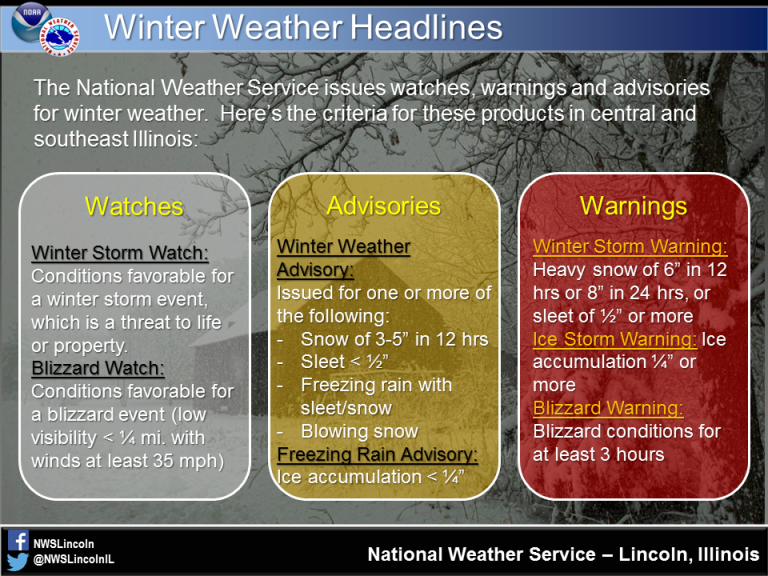Winter Weather Advisory: Impacts On School Transportation And Safety

Table of Contents
Delayed School Openings and Closures
The issuance of a winter weather advisory often leads to delayed school openings or complete school closures. Understanding the decision-making process behind these closures is vital for parents and students alike.
The Decision-Making Process
School districts employ a multi-faceted approach when determining whether to delay or close schools due to inclement weather. Several critical factors are considered:
- Factors considered: Road conditions (ice, snow accumulation, black ice), temperature (including wind chill), severity of the winter storm as predicted by the winter weather advisory, and reports from transportation departments.
- Communication methods: School districts utilize various methods to communicate delays or closures, including school websites, automated phone calls, text message alerts (SMS), and social media announcements (Facebook, Twitter). It’s crucial to ensure your contact information is up-to-date with the school.
Impact on Families
Delays and closures significantly disrupt family schedules. Parents often face difficulties in making alternative childcare arrangements.
- Challenges for working parents: Unexpected school closures can cause significant challenges for working parents, necessitating the need for emergency childcare solutions or potential loss of work or income.
- Planning ahead: Proactive planning is key. Establishing backup childcare plans before a winter weather advisory is issued is essential for mitigating stress and ensuring children are cared for.
Challenges to School Bus Transportation
A winter weather advisory presents significant challenges to school bus transportation, impacting safety and efficiency.
Road Conditions and Bus Safety
Icy or snowy roads dramatically increase the risk of accidents. School bus drivers face hazardous conditions that necessitate extra caution.
- Increased braking distances: Buses require significantly longer stopping distances on icy or snow-covered roads. Drivers must increase following distances to avoid collisions.
- Reduced visibility: Snow, sleet, and fog drastically reduce visibility, making it harder for bus drivers to navigate safely.
- Potential for accidents: The risk of collisions, slide-offs, and jackknifing is substantially higher during winter storms, emphasizing the need for extra vigilance.
Bus Route Delays and Cancellations
Adverse weather often leads to delays or complete cancellations of bus routes. This impacts students and their families.
- Impact on student arrival times: Delays can lead to students arriving late to school, potentially impacting their academic schedules and participation in classes.
- Impact on extracurricular activities: After-school activities, sports practices, and other extracurricular events are frequently cancelled or delayed due to bus route disruptions caused by a winter weather advisory.
Ensuring Student Safety During Winter Weather
Student safety is paramount during a winter weather advisory. Proper preparation and safe practices are crucial.
Proper Clothing and Gear
Students should be adequately dressed for cold and potentially hazardous conditions.
- Essential clothing items: Warm coats, hats, gloves, scarves, waterproof and insulated boots are essential for protecting students from the elements.
- Importance of layering: Layering clothing allows students to adjust to changing temperatures and maintain warmth throughout the day.
Safe Walking and Waiting Practices
When walking to bus stops or school, students need to be aware of potential hazards.
- Staying visible: Wearing bright, highly visible clothing and using reflective gear, especially during low-light conditions, is crucial for safety.
- Waiting safely at designated stops: Students should wait at designated bus stops, away from traffic and icy patches. Supervision by parents is advised, especially for younger children.
- Awareness of surroundings: Students should be taught to be aware of their surroundings, looking out for traffic, slippery surfaces, and other potential hazards.
Conclusion
Winter weather advisories pose significant challenges to school transportation and student safety. By understanding the decision-making processes behind school closures and delays, preparing students for cold weather conditions with appropriate clothing, and emphasizing safe transportation practices, we can mitigate risks and prioritize children's well-being. Staying informed about weather forecasts and school announcements via official channels is vital. Remember to check for winter weather advisory updates regularly and plan accordingly to ensure the safety and well-being of your children during winter storms. Be prepared for delays or closures and always prioritize safety.

Featured Posts
-
 Vtoroy Rebenok Dzhennifer Lourens Aktrisa Iz Golodnykh Igr Rasshirila Semyu
May 20, 2025
Vtoroy Rebenok Dzhennifer Lourens Aktrisa Iz Golodnykh Igr Rasshirila Semyu
May 20, 2025 -
 Gioco Hercule Poirot Ps 5 Acquista Ora Su Amazon A Meno Di 10 Euro
May 20, 2025
Gioco Hercule Poirot Ps 5 Acquista Ora Su Amazon A Meno Di 10 Euro
May 20, 2025 -
 The Buy Canadian Beauty Industry A Tariff Affected Market Analysis
May 20, 2025
The Buy Canadian Beauty Industry A Tariff Affected Market Analysis
May 20, 2025 -
 The Future Of Apples Llm Siri Challenges And Opportunities
May 20, 2025
The Future Of Apples Llm Siri Challenges And Opportunities
May 20, 2025 -
 Huuhkajien Mm Unelma Uuden Valmennuksen Tehtaevae
May 20, 2025
Huuhkajien Mm Unelma Uuden Valmennuksen Tehtaevae
May 20, 2025
Latest Posts
-
 31 Month Sentence For Councillors Wife Following Anti Migrant Post
May 21, 2025
31 Month Sentence For Councillors Wife Following Anti Migrant Post
May 21, 2025 -
 Southport Case Highlights Dangers Of Online Racial Hatred Tory Councillors Wife Jailed
May 21, 2025
Southport Case Highlights Dangers Of Online Racial Hatred Tory Councillors Wife Jailed
May 21, 2025 -
 Social Media Rant Leads To Jail Sentence For Tory Councillors Wife
May 21, 2025
Social Media Rant Leads To Jail Sentence For Tory Councillors Wife
May 21, 2025 -
 Councillors Wife Faces Jail For Anti Migrant Social Media Post
May 21, 2025
Councillors Wife Faces Jail For Anti Migrant Social Media Post
May 21, 2025 -
 Tory Councillors Wife Jailed For Racist Tweets The Southport Case
May 21, 2025
Tory Councillors Wife Jailed For Racist Tweets The Southport Case
May 21, 2025
